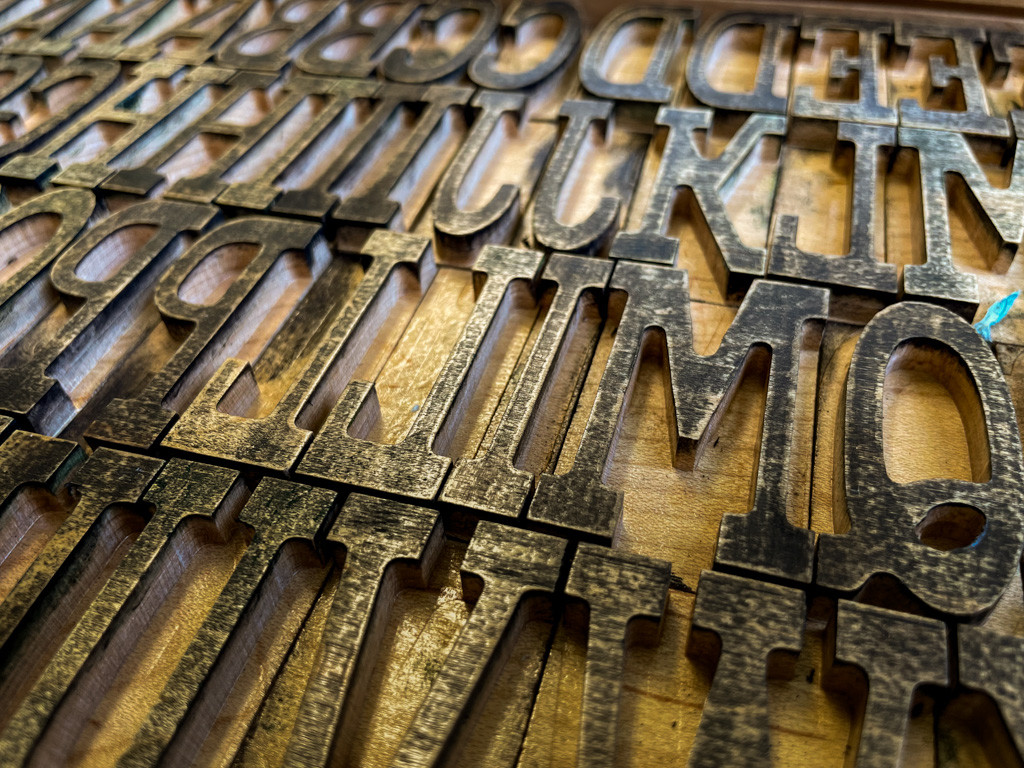We pulled into the parking lot, in the pre-dawn light. Anna was asleep bundled in blankets in the front seat. I stepped out of the car, gathered my gear, some breakfast, and our camping chairs. With everything ready to go, I tapped on the window and woke up Anna. We locked the car and started the short hike out to the canyon’s edge. As we wound our way through the desert brush and boulders, I tried to picture the arch in my mind. Where would the sun rise over the horizon? Would there be others there this early? What did I want the shot to focus on?
As we crested the ridge, the arch came into view. I knew that visiting Mesa Arch was a unique experience in the Canyonlands Arches area. While most arches were seen from below, Mesa Arch did not extend more than ten feet over your head. The arch sat a couple feet out from the edge on the top of a 500-foot vertical cliff. This gave visitors a great view of the arch framing the canyon vista. It was close to five a.m., that gave me about forty-five minutes to get everything set up in time if I wanted to start shooting thirty minutes before the sunrise. We picked a spot and tested a couple different angles while I tried to imagine the results. The gear I had consisted of a tripod, a six foot metal track, my camera, and a motorized mount. The camera was mounted on the track, and over the course of the next hour and a half, the camera would slowly move from one end to the other. With everything set, I put the camera in motion. The camera started its long journey down the track and snapped a photo every thirty seconds as it inched slowly along. Anna and I put up the chairs, kicked back, and prepared for the show.
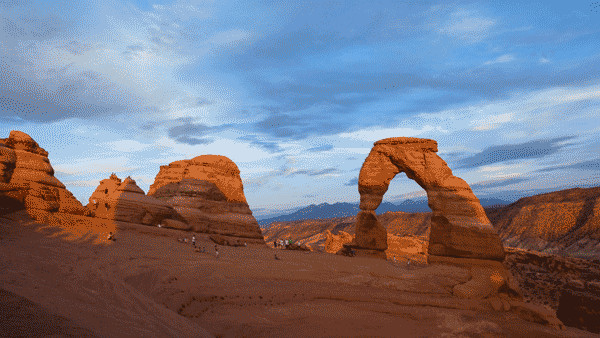
By now about a dozen of other people joined us on the canyon’s edge, an odd collection of nature photographers and hikers. Some traveled from halfway across the world to be part of this moment. They wandered around snapping pictures or simply enjoying the sight. As the sky brightened, activity around the arch increased. While time-lapse photography required more equipment and considerable more time to set up, there were definite perks. Once everything was set and running I didn’t do anything except wait. While others were scrambling about trying to make sure they had the best shot, we sat back and soaked up the experience. When the time arrived for the best photos of the morning, my success in capturing the moment had already been decided by my preparation.
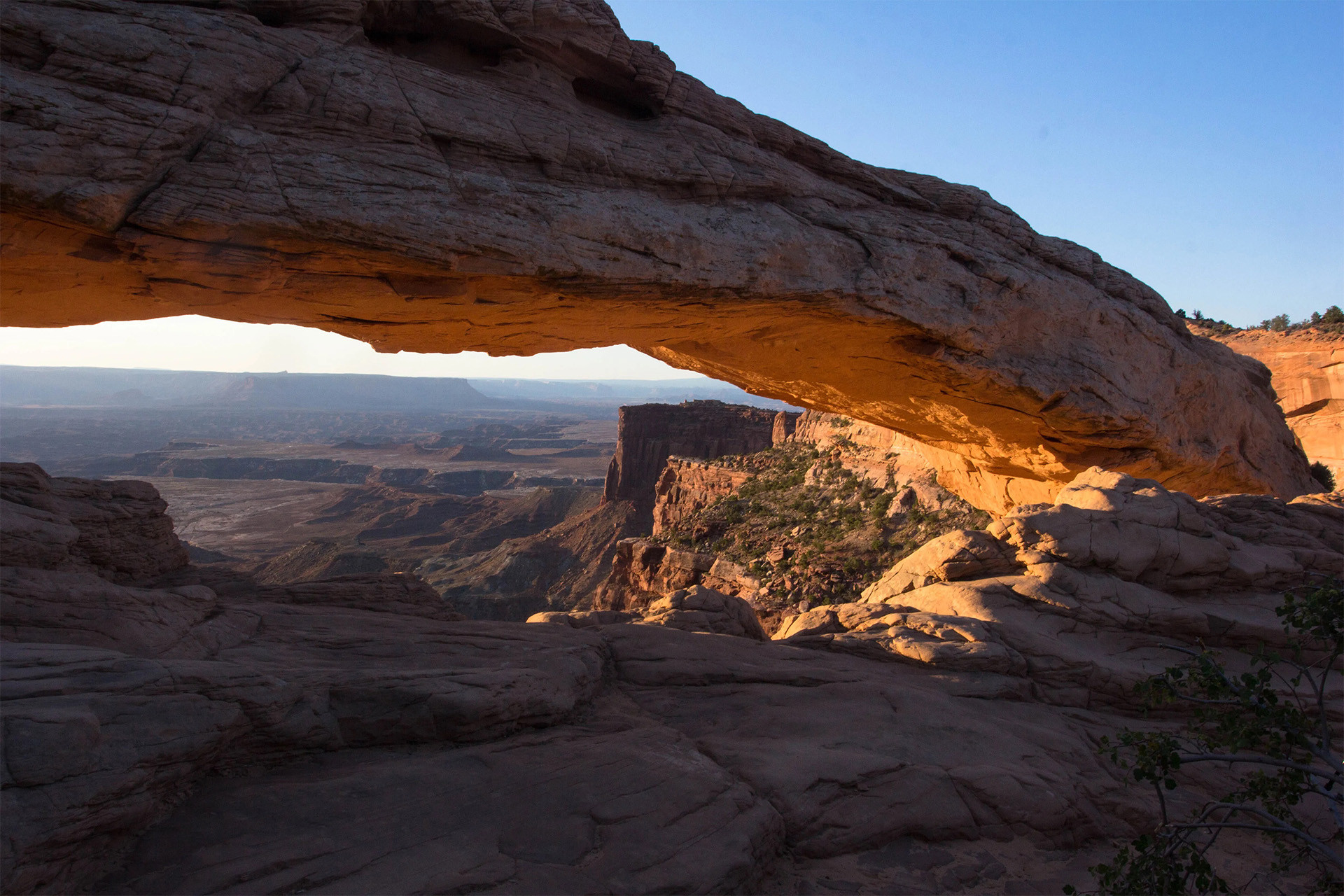
The sun peeked over the mountains in the distance casting its warmth and throwing its light in sharp relief on the canyon walls. Thankfully the sun came up almost exactly where I imagined — not in frame of my shot to blow out and overexpose anything but not too far outside my shot either. I would capture the dramatic lighting and the landscape perfectly. The best part, I was able to step back and really enjoy the moment. When the sun hit the canyon wall beneath Mesa Arch, it reflected a vibrant red glow off the sandstone onto the underside of the arch in front of us. The arch radiated with morning light and perfectly framed the twin buttresses deeper in the canyon. I tried to soak in all the details, the light, the sounds.
It became clear to us why this was such a popular spot for catching the morning light. As the soft click of the camera continued, I tried to imagine what the result of the clip would be. As the sun moved farther into the sky, I tried to see the shadows in motion. The change was much too gradual to clearly see in person, but the change would be visible once I compiled my photos into a short video.
These hours of preparation, planning, and traveling — the time spent waiting, setting up the gear, editing the photos — resulted in a ten-second video clip. Was it really worth it? No, not for a ten-second clip. But, then again, I got much more out of the trip than that. The experience, the journey, the trial and error, the exploration that came along side the clip was what made it worthwhile. Because of these other aspects, I would repeat the entire process over and over again. That shot was just a tribute, a true snapshot into the process.
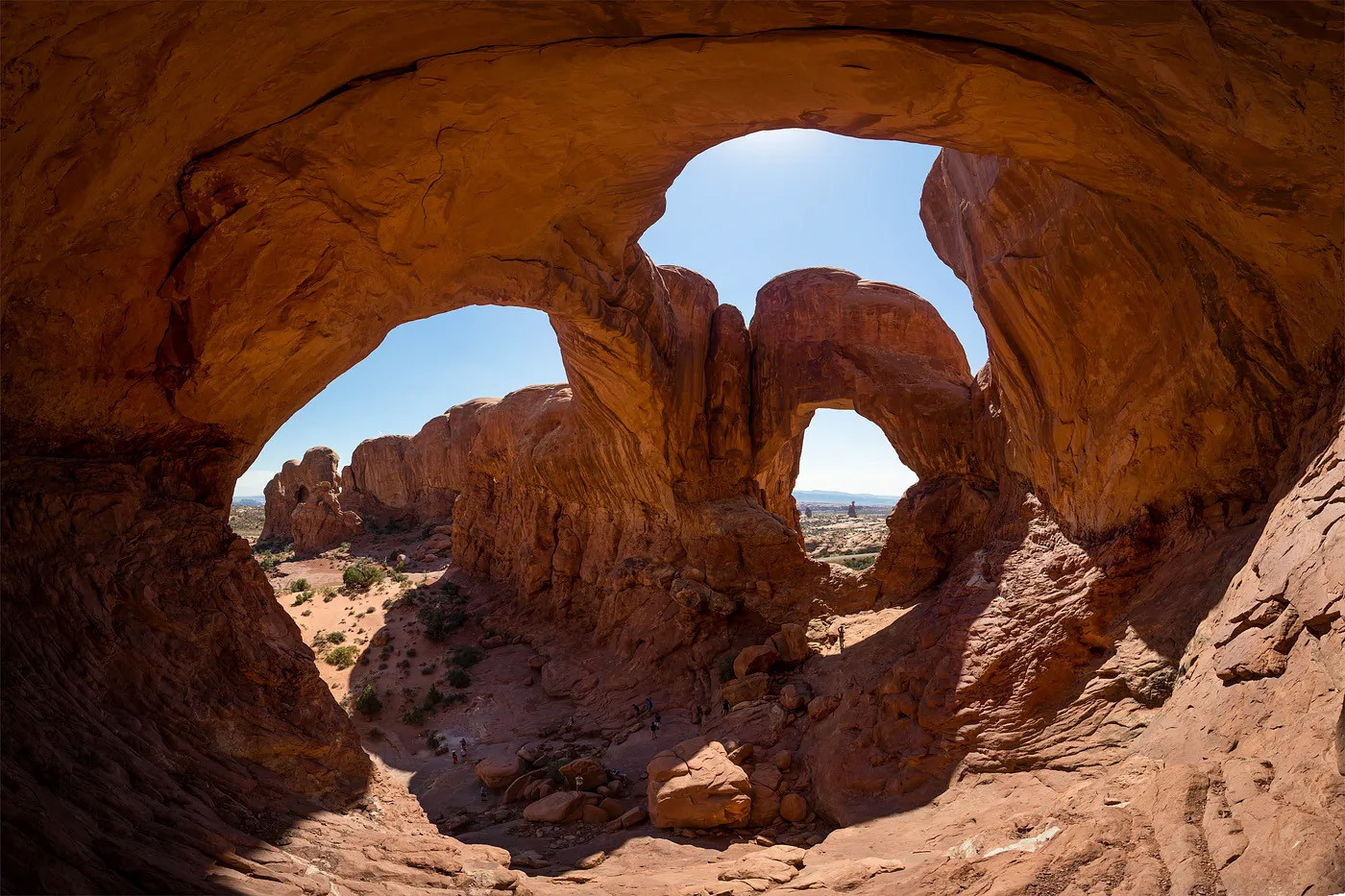
I pulled out of the parking lot. In the back of mind, I registered a small clatter. I brushed it off as branches scraping along the roof or something else unimportant. I was occupied thinking about my iPod. I’d found it in a puddle leaking from a water bottle. I quickly powered it off and hoped that none of the electronics fried inside. We pulled onto the main highway and started towards our next destination.
“Anna, have you seen my sunglasses?”
I checked all the normal spots, the dashboard, the console, in the door. No luck. It hit me that the noise I’d heard earlier sounded a lot like a pair of glasses falling off the roof. We pulled a quick U-turn and headed back to the parking lot to see if we could find them.
“I’ve walked all around where we were. No luck.”
“Me neither. I even asked anyone around if anyone saw a pair.”
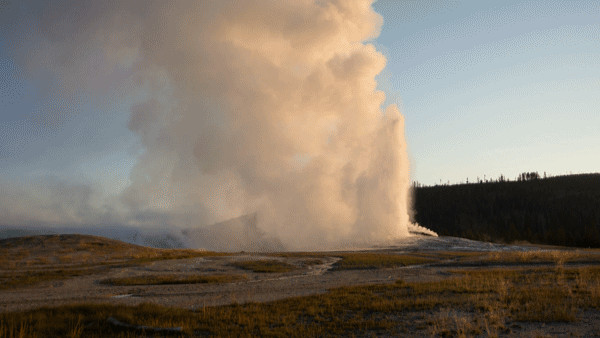
Our group was a little worn out from a full week of camping, waking up early to catch the sunrise, exploring and hiking. It was rough to lose my glasses and have the fear of a waterlogged iPod. I seriously debated calling it quits and trying to enjoy the night at our camp. I’d done enough already. Did I really need another time-lapse? I tried to shove the thoughts from my mind. I’ve come this far I might as well follow through and hope for the best. We pulled onto the side of the road near Oxbow Bend.
I gathered the gear and trekked down to the edge of the slow-moving Snake River. The tricky thing with the Snake River is all the standing water quickly became a mosquito haven. From the second we got out of the car we were covered in the bugs. While I set up, Anna ran up to the car to fetch the bug spray. I set up the tripod and the track for the camera right at the water’s edge to get the best shot possible and accidentally put my foot in the water.
“Great,” I thought, “just add it to the list of things that can go wrong.”
Anna came back with the spray and I covered my arms and legs in mosquito repellent. I try and spray some on my hands to rub on my face, instead I accidentally sprayed bug spray in my face. In short I was miserable the entire day. I felt like I played with a stacked deck and had lost.
As the sun dropped below the horizon I set the camera in motion. We pulled out some dinner and sat in our chairs at the river’s edge.
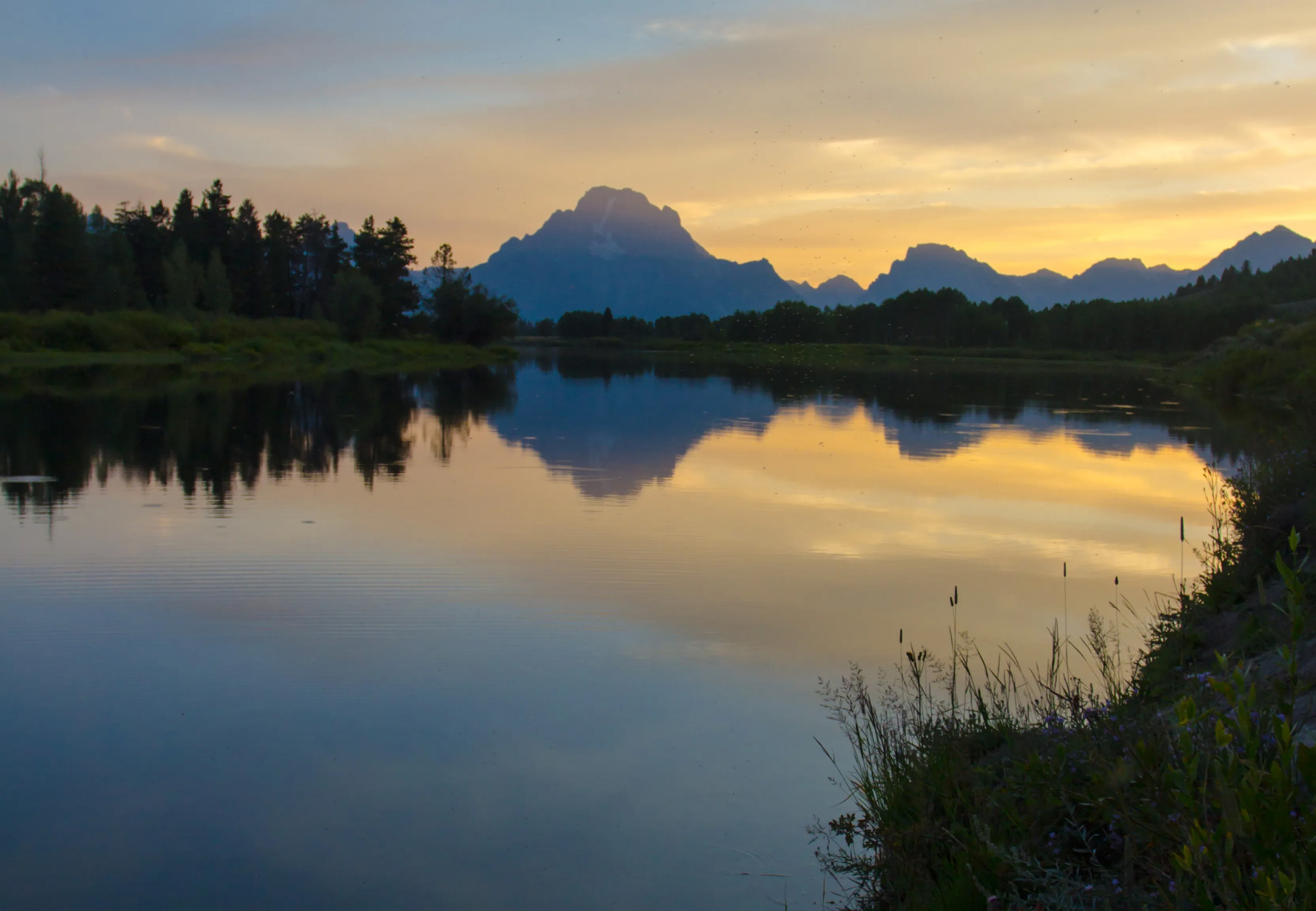
The shadows from the setting sun slowly traveled up the face of the Tetons in front of us. The sky turned a vibrant shade of orange and red, while the mountains gained deeper and deeper shades of blue and purple. The still waters of the Snake River created a near perfect reflection of the Grand Tetons. It was only then that I took a breather and really enjoyed the moment for the beauty that it held.
My frustration faded with the last light of the day. It was worth it now. Thinking back on that evening, I realized how crazy it was so much went wrong that day. If I had given up and called it quits, I would have not taken some of my favorite photos from the trip.
This principle ties into my practice as a graphic designer. I have learned that perseverance in the face setback after setback can lead to some of the most rewarding moments. Sticking to your guns and following through on a project shows in your work. This principle is one of the most important factors that can take your work from mediocre to exceptional.
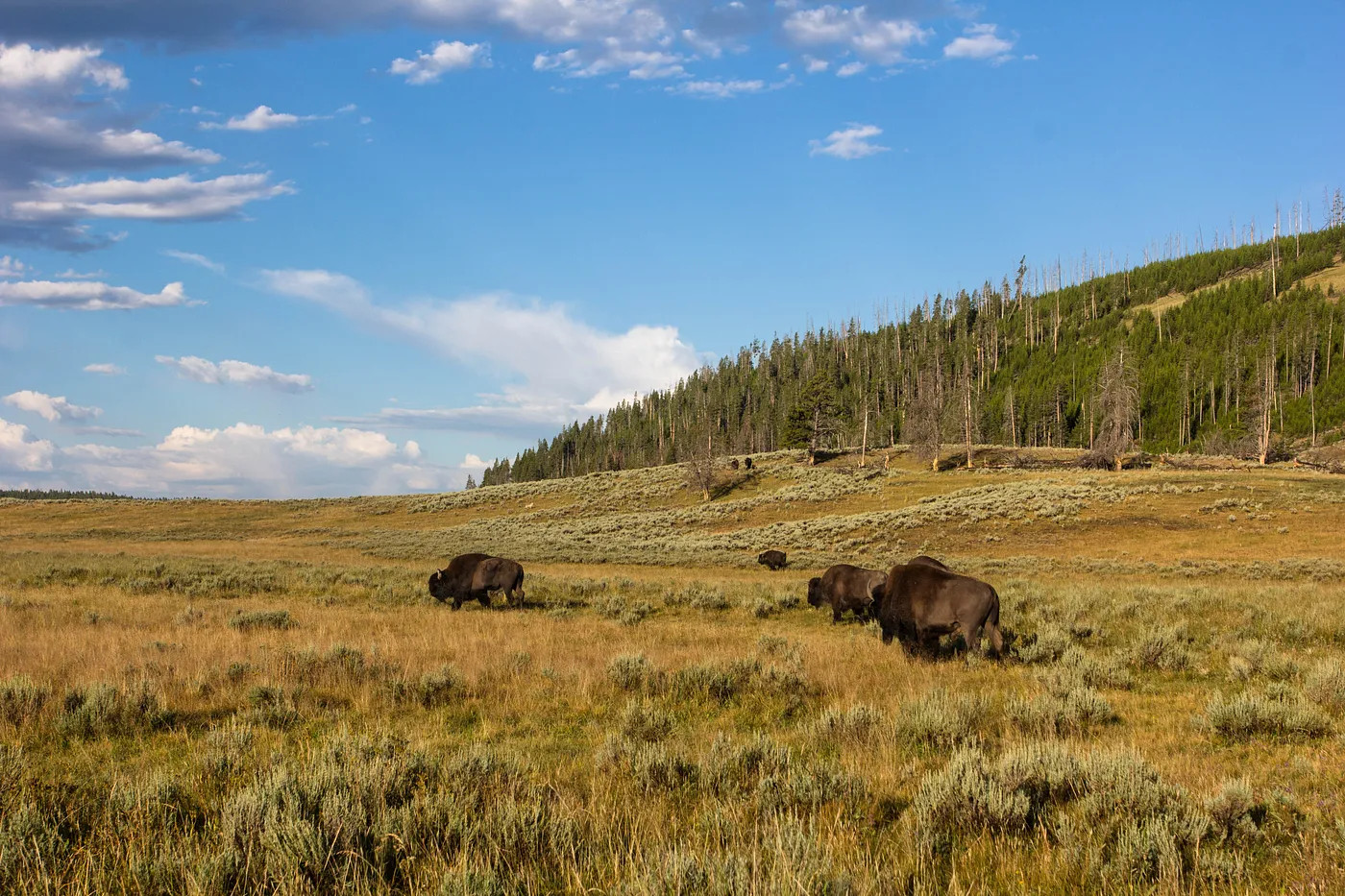
“Hey! Excuse me. Do you think you could lend us a hand?”
I looked up from the fire to see one of the guys from the camp next to us. Earlier that evening they had pulled into the campsite — five friends packed into a small car.
“Yeah, sure,” I respond. “What do you need?”
I walked over to their campsite to see them huddled around their tent trying to figure out how it goes together. I showed them how the poles fit into the holes and bend to create a frame that holds the tent up.
“What do you know? Five engineering students and none of us could figure out that tent poles bend.”
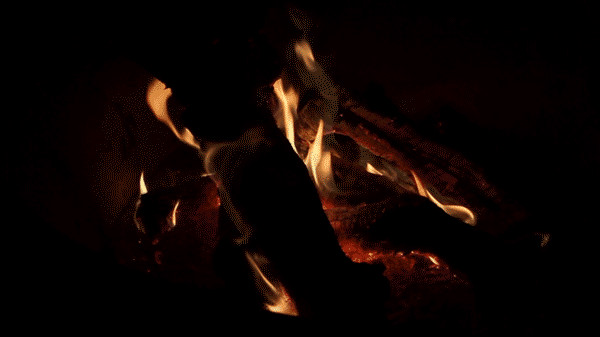
I laughed and told them not to worry. I could tell that they’re new to the experience. The biggest giveaway: they brought a “five-man tent.” When the manufacturers decide how many people the tent fits, they pack people in like sardines. When a tent says it’s a five-man tent, it really would only fit two or three people comfortably. I helped them get set up, they thank me, and, as I turned to leave, one of them asked,
“Where did you get your firewood?”
“You can get some from the camp store or the ranger station. I think they’re
both closed for the night. You can have some of ours if you want.”
I gave them a couple logs, some smaller sticks, and a couple sheets of newspaper. I figured that would be enough for them to get it started and last them at least part of the night.
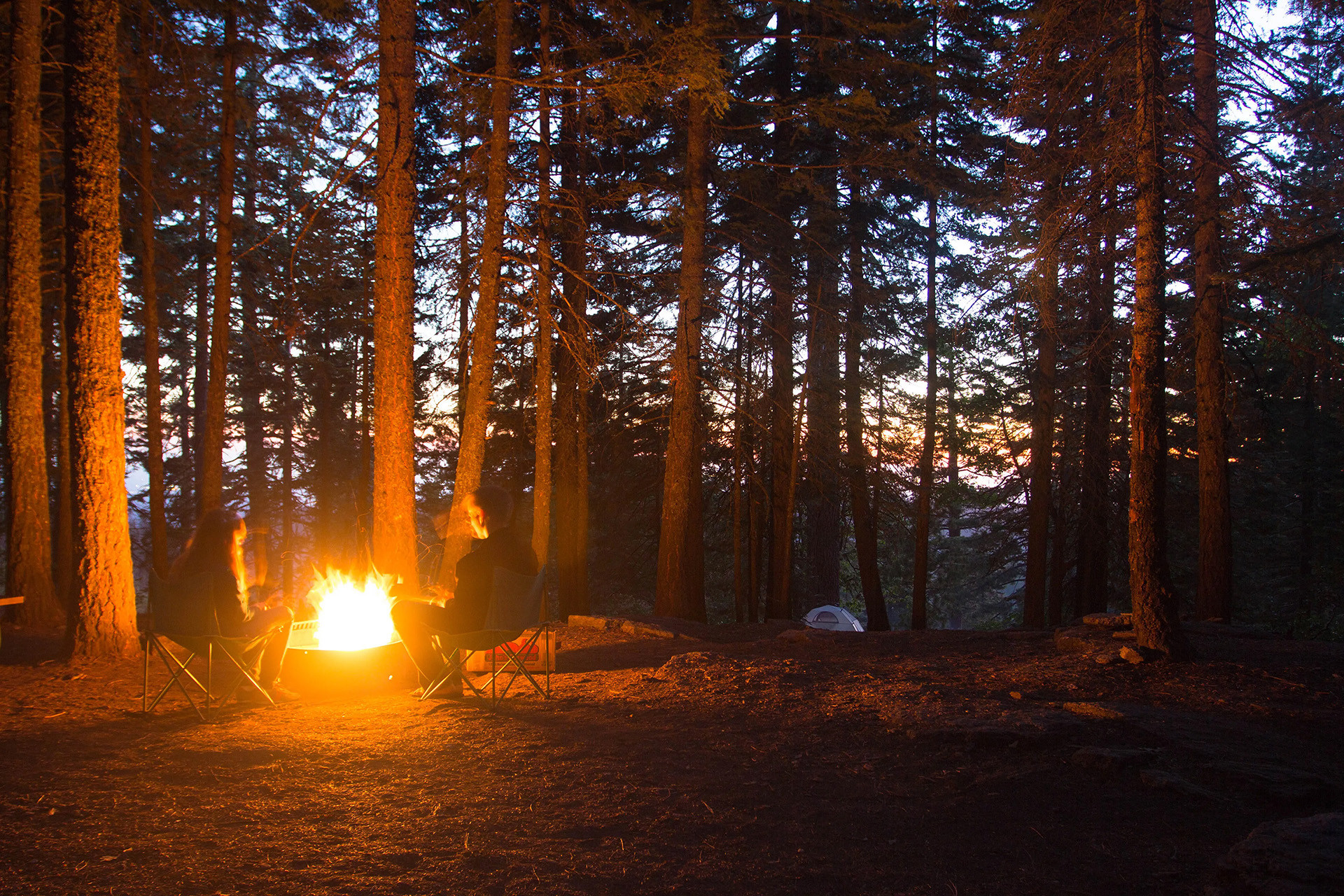
Back at our camp Anna and I enjoy some s’mores and watched the fire. We packed up the food, and I went up to the car to pack it all away for the night.
As I walk by the camp I noticed the lack of a fire. I went over to see if they needed a hand. They had dumped all the wood on the fire at once, basically smothering any chance of flames catching. I give them a hand and got their fire going.
Later, I realized how distinct our two camping experiences must have been. Experience, preparation and a little research make the biggest difference between enjoying a relaxing and enjoyable camping experience or regretting the entire trip. Design is the same. Experience, preparation and a little research tend to make the process stress-free and enjoyable.
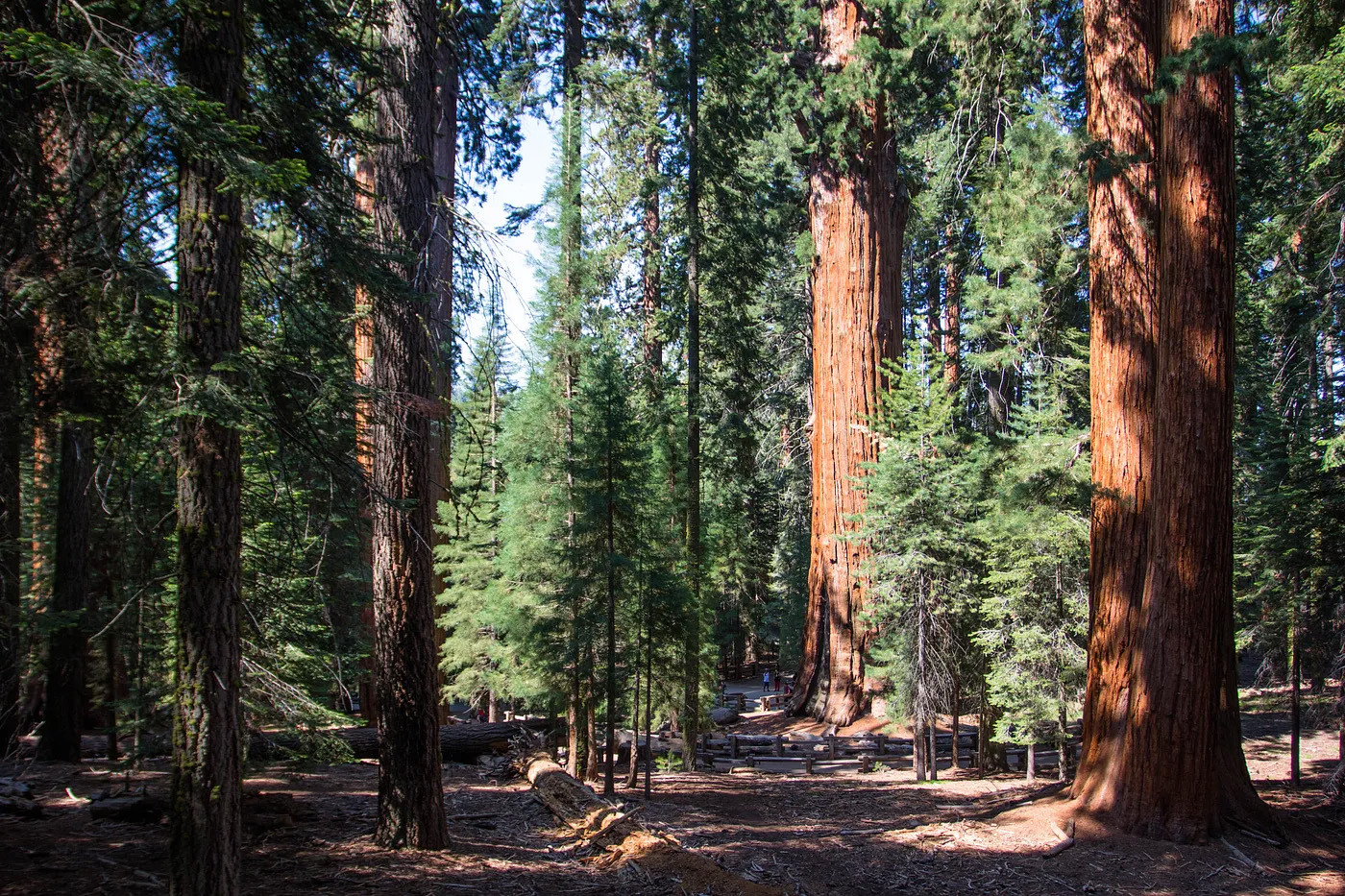
“So you want to play another round?”
“Might as well. It doesn’t seem to be letting up anytime soon.”
The rain made a constant beat as it hit our tent, water running down the side.
“Just make sure we’re not leaking water anywhere.”
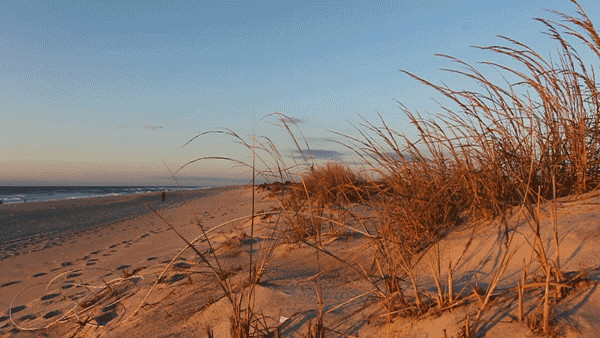
The conversation basically summed up our day at Assateague Island. We had made all the plans and booked our reservations to go for a couple days to explore the park. The forecast as we left for the park called for a chance of rain over the next couple days, but we didn’t think it would be too bad. The rain started mid morning on the first day and didn’t let up for a solid four hours.
“I just checked the forecast again. It’s only getting worse. It’s supposed to dump more tonight, and tomorrow we’ll get the worst of it.”
“Well, I guess there’s not much more we can do,” I reply.
The steady beating of the rain slowed to a gentle patter.
I looked up in disbelief. “Is it really stopping?”
“Are we staying or should we get out while we can?”
It’s a hard decision to make. When does pursuing something become futile and not worth the time anymore? Often even the best plans can go wrong. Sure, the rain had slowed for now. We could have taken our chances and hoped the forecast was wrong. a light drizzle might have been the best time to pack up and get out without getting absolutely drenched.
Living in Baltimore, I knew Assateague Island was close enough to home I’m sure we could visit again when the weather was more compliant. It was hard to have sunk all the time and effort into planning. I hated to see it go to waste. One of the hardest things with any project is the ability to cut your losses and trim out unsuccessful endeavors before you lose too much.
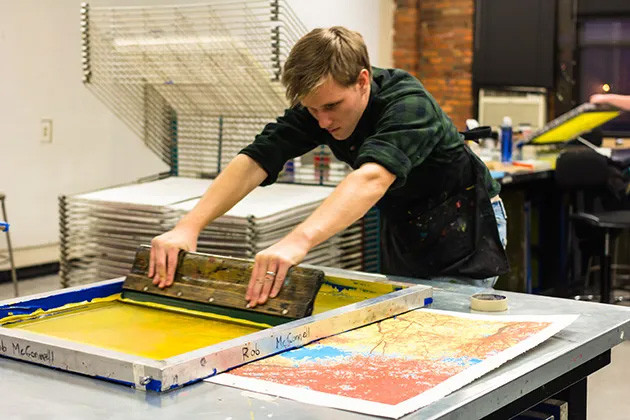
While working on the prints for The Parks Project, I started out with the idea that I would design a typeface and hand-set lead type to print an additional layer onto the prints. As I worked on the project further, I realized this desire presented more problems than it actually solved. The typeface I created looked amazing on its own, but there were too many competing elements when combined together with the print. To create the posters I would screen-print the various colors and image. I planned to have text letter-pressed onto the prints afterwards.
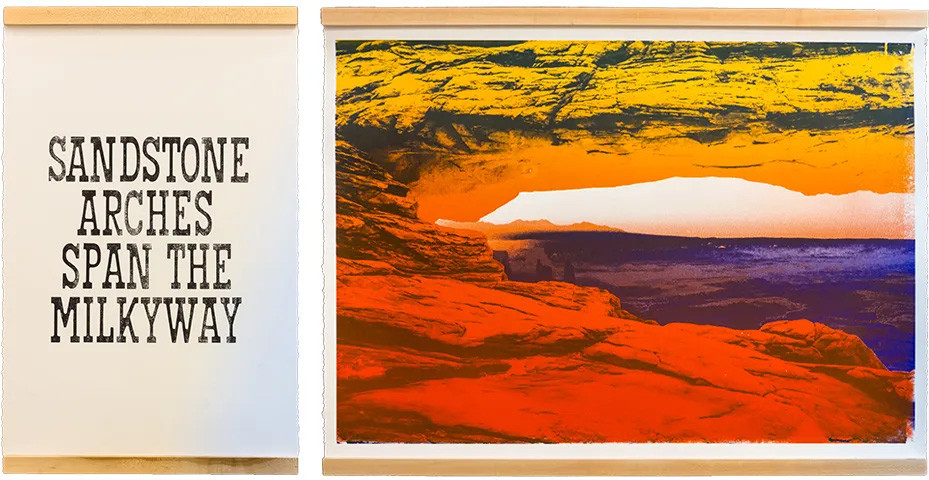
The presses I had access to at MICA could only fit a print about twenty inches wide. This limited the size of poster I could make. I came to realize that even with all the effort and work I’d put into making them work together, I needed to make a new plan. I decided to make two types of posters. The first would be image based and purely screen-printed. These prints could be much larger than I originally planned. The second set of prints would be pure letterpress. This allowed the focus to be on the words themselves and the character of the typeface I had designed. Because I was able to re-imagine the way my prints looked I was able to create a stronger and more diverse body of work for the project.
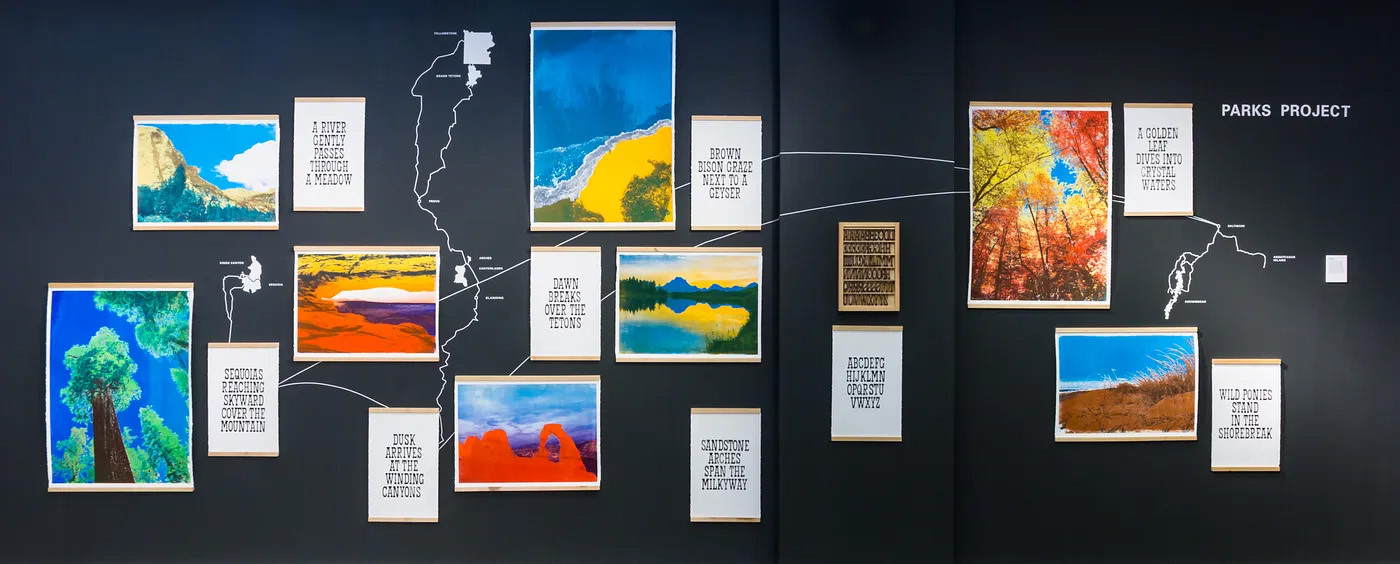
Article orginally published on Medium as part of my GDMFA Thesis Project at MICA.
